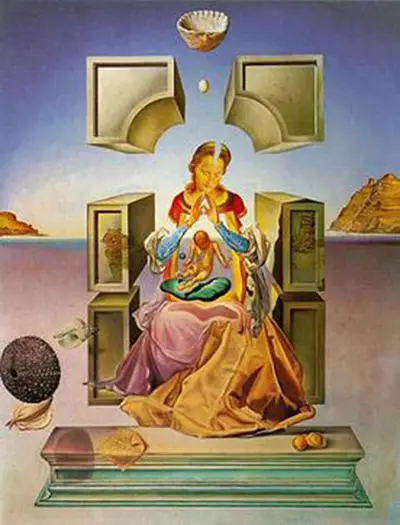It is exhibited at the Haggerty Museum of Art at Marquette University in Wisconsin, USA. The painter submitted the piece of art to Pope Pius XII for approval, which was granted. A year later, he created another painting retaining the same title and theme but with different poses and details. The painted work measures 275.3 cm x 209.8 cm (108.4 in x 82.6 in) and is housed at the Nagasaki Prefectural Art Museum in Japan. The piece is never shown in retrospective exhibitions since it is very large and to get it out, it would require taking out the windows or knocking down doors where it hangs.
The painting presents the Virgin Mary (posed by Dali’s wife, Gala) and the infant Christ cradling on her lap. Both are suspended in the air, have a section carved out of their torso and the Virgin’s arms are dismembered. The Child is holding a globe in one hand and a cross in the other and both are joined in what seems like a mirror-like reflection, symbolizing the reach of spirituality. Both figures are surrounded by Biblical symbols like lemons, urchins, seashells, fish and an egg. The original painting has a sea urchin while the 1950 painting has a rhinoceros, a basket of bread and cuttlefish-angels, also posed by Gala.
Also striking in the painting is the use of shapes and colours. Instead of presenting an incoherent jumble of images, the piece of art is very clear and symmetrical. The vibrant blue colour scheme of the background symbolizes the Catalonia sea which is dear to Dali’s heart. The other marine objects highlight the artwork’s Biblical framework as well as the backdrop. Painted after World War II, the Madonna of Port Lligat represents some sort of transition for Dali – away from a complete adherence to surrealism principles towards a mix of religious and classical aspects. Overall, the painting is a great combination of elements that characterize the painter in his surrealist phase and others that reflect the religious and classical tradition.


